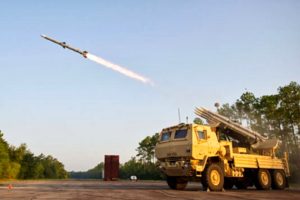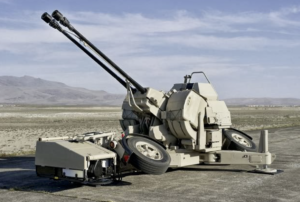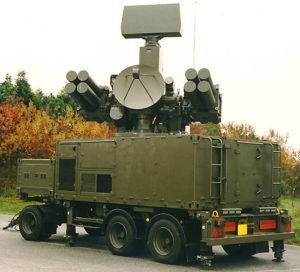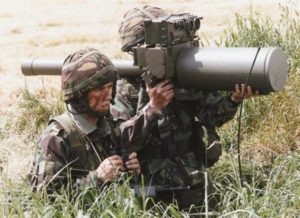Background
As a member of the Gulf Cooperation Council, Oman is working in coordination with Bahrain, Qatar, Kuwait, Saudi Arabia, and the UAE to discuss creating a regional ballistic missile defense shield.
Oman’s geographic position offers opportunities for future developments. It’s position on the Gulf of Aden would make it ideal for tracking missiles from certain launch points if radars were deployed there. It has also invested in the National Advanced Surface-to-Air Missile System to provide air defense capability.
Oman’s Air Defense Capabilities
| System | Role | Number Deployed | Platform | |
| NASAMS | Medium-Range Air Defense | Unknown | Truck-Mounted; Road-Mobile |  |
| VL Mica | Short-Range Air Defense | Unknown | Truck-Mounted; Road-Mobile |  |
| Oerlikon Skyguard | Short-Range Air Defense | 10 Systems | Ground-Based; Road-Mobile |  |
| Rapier FSC | Short-Range Air Defense | Unknown | Ground-Based; Road-Mobile |  |
| Crotale | Short-Range Air Defense | Unknown | Ground-Based; Road-Mobile |  |
| Blowpipe | Short-Range Air Defense | Unknown | Man-Portable |  |
| Mistral Missile System | Short-Range Air Defense | Unknown | Man-Portable |  |
Oman only has Lower tier Missile defense capabilities. They have an unknown number of The Norwegian Advanced Surface to Air Missile Systems (NASAMS) and an unknown number of Vertical Launch Mica systems.
Recent News
In November 2022, the United States approved the sale of Raytheon produced medium-range precision strike standoff systems to the Royal Air Force of Oman. The purchase was for around $385 million and aims to improve air-to-ground defensive capabilities against regional threats to Oman.
In October 2023, the United States announced a plan to sell $70 million worth of anti-tank missiles to Oman. This sale includes 301 TOW 2b anti-tank missiles and accounts for contractor support from Raytheon.
